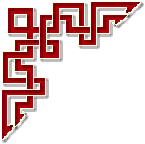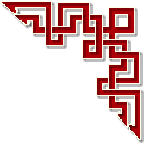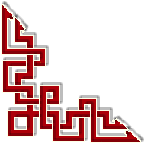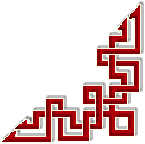|
Projects
- Sand Mandala
Avalokiteshvara,
or Chenrezig as he is known in Tibetan, is the Buddhist deity who personifies
the ideal of compassion. He can be portrayed in several different forms, two of
the most popular being as a white deity with either four arms or 1000 arms; the
extra arms symbolize his ability to help many beings simultaneously.
|
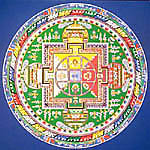
Chenrezig
Mandala
|
All
Buddhist teachings trace back to the historical Buddha, Siddharta Gautama, who
lived in India two and a half thousand years ago. All the teachings are based
on the Four
Noble Truths the Buddha thaught in the first sermon following his Enlightement:
the recognition that every being experiences sufferings; the understanding of
the causes of this sufferings; and the path or methods by which to achieve Liberation
from suffering, or full Enlightement. The Buddhist Tantric teachings include methods
for the purification of the psycho-physical components of human beings through
meditation upon a pure being, or deity, within a pure environment, or mandala
(Tibetan: kyilkhor). The deities who onhabit a mandala are not external gods;
rather, they symbolize the Enlightened state which everyone has the potential
to realize.
This mandala, constructed here from coloured sand particles, represents the residence
of Chenrezig. Although depicted here on a flat surface, the mandala is actually
three-dimensional, being a "divine mansion" at the center of which resides Chenrezig,
surrounded by the deities of his entourage.
Every aspect of the mandala has meaning; nothing is arbitrary or superfluous.
The four outer walls of the mansion are in five transparent layers, coloured white,
yellow, red, green, and blue, representing faith, effort, memory, meditation,
and wisdom. The four doorways, one in the centre of each of the four walls, represent
the Four Immeasurable Thoughts: love, compassion, joy, and equanimity. The lotus
flower in the centre of the mandala represents the Lotus (Sanskrit: Padma) family,
one of the the five Buddha families which correspond to the five psycho-physical
components of a human being, and which purify specific impure states of mind;
the Lotus family purifies passion into discriminating awareness. To the East,
in the blue quadrant, the Vajra family purifies aggression into mirror-like wisdom;
in the South, the yellow quadrant, the Jewel family purifies pride into the wisdom
of equality; the the West, coloured white, the Weel family transforms ignorance
into space-like wisdom; and to the North, the green quadrant, the Sword family
turns envy into all-encompassing wisdom.
< Back to Projects |
|
